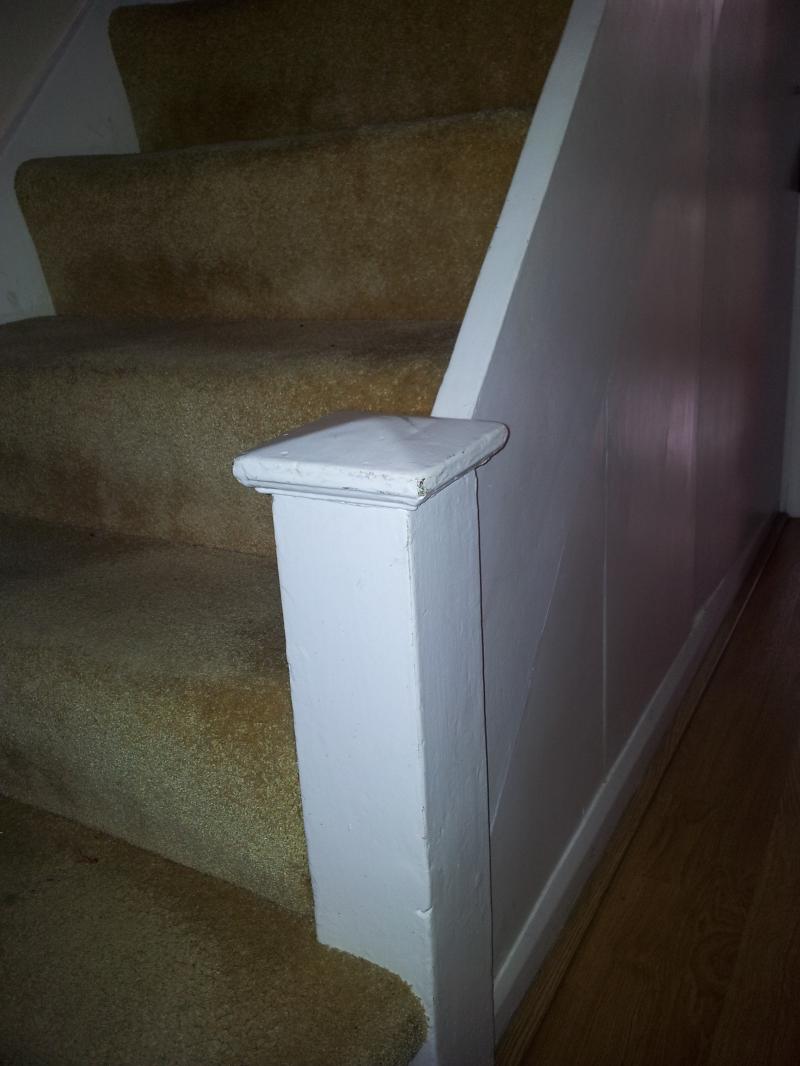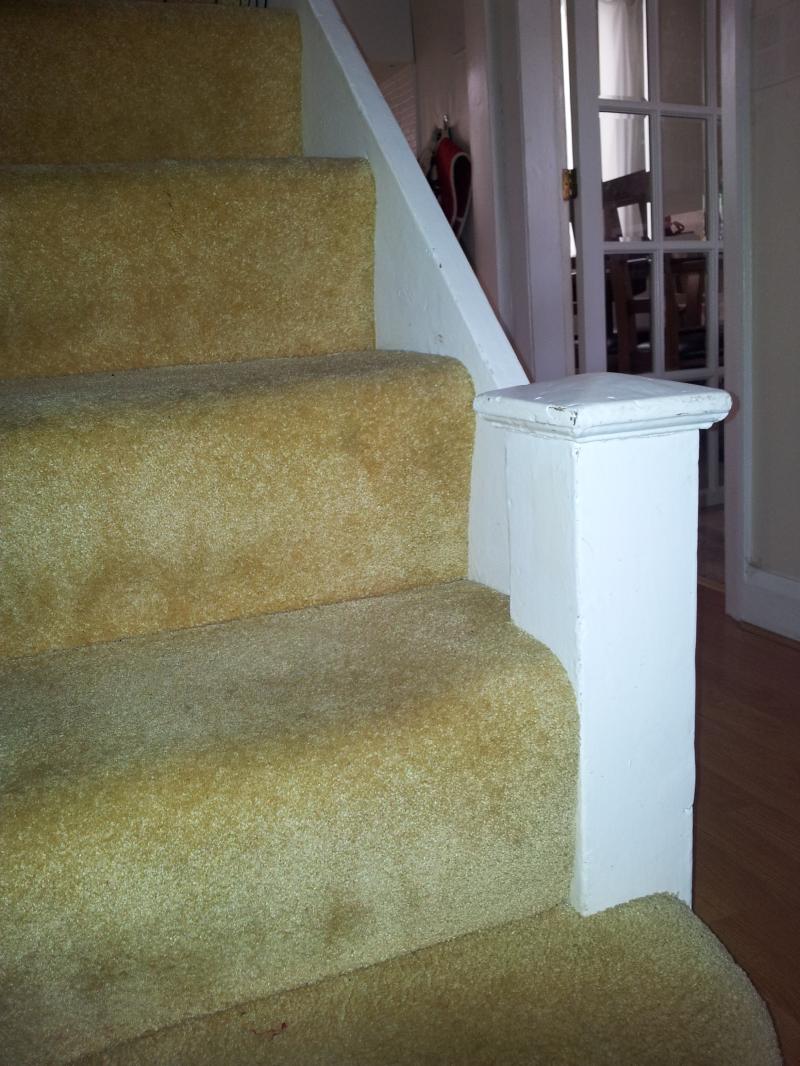Many thanks for all your replies - particulary stevethejoiner - most detailed...thanks.
You suggest not using polyurethane glue. What would you advise as an alternative?
What is the best method for removing the centre third of wood from the existing newel base and the two outer thirds of wood from the new newel post?
It would be easy to demonstrate, not so easy to write it down, but I will have a go.
Tools required.
Carpenter square, sharp chisel, mallet or hammer, sharp pencil, marking gauge, craft knife and new hardpoint panel saw, unless you are 100% sure your current panel saw has not lost its set. Because if your existing saw has lost its set, common if a nail has been cut in error, you will not be able to cut a straight line. A multi-tool would make the job easier, as would a tenon saw.
Marking out the mortice on the existing newel stump.
Measure the top and divide it into three, continue the three lines down each side of the post to the desired depth, say 100mm. Set the marking gauge to the width of these 1/3rd lines and run the point of the marking gauge up to post, across the top and down the other side. Repeat on the other 1/3rd line. The groove the gauge assists guiding the saw cuts.
With the carpenters square and pencil, square around all four sides at the 100mm depth line. If you mark correctly the end of the line on the fourth face should accurately meet your start point on the first face. If not you are probably not holding the square properly.
Then running the craft knife on the blade edge of the carpenters square, make a cut line on the pencil mark at the bottom of the mortice only, do not cut mark all around the post, only mark the part to be removed. Do this on both sides of the newel. This will aid your getting the mortice bottom square and flat.
Cutting out the mortice.
From one side only, cut at 45deg down the gauge mark to the knife cut at the 100mm depth, but do not try to saw right through and down the other side, keep the saw at 45deg so that the saw teeth stay on top of the newel. Then move around to the other side and repeat the 45deg cut down to the 100mm line. Only when you have done this on both sides do you bring the saw level and cut down the newel. The saw will follow the first 45deg cut and you should get a lovely straight cut.
Repeat the cut process on the other marked line.
If you have a multi-tool use the oscillating saw blade to cut in from both sides on the knife marked line to remove the mortice.
If not, use the panel saw again and make three or four more vertical cuts down to the 100mm depth, but these cuts do not need to be so accurate. Then with a sharp chisel on the knife mark points chop into the newel sides to remove the timber. Light chops into the side, followed by chiselling down from above, little by little is better than trying to do it all in one go.
Marking out the tenon.
With your marking gauge (which should still be set) gauge mark the new newel across the end and up the sides on both sides to the 100mm point. Use the carpenter square and square around at the 100mm and knife mark the two tenon cheeks hat are to be removed.
Golden rule, cut down the tenon cheeks (as before, 45deg in from each side first and then saw horizontally)before cutting in through the sides because if you cut too deep into the tenon sides, you weaken the tenon but problem wont happen if you have already cut down the sides of the tenon. The sharp panel saw is best for the vertical cuts but a fine toothed tenon saw is best for crosscutting the tenon cheeks.
Best glue? I would go with Axminster’s titebond111 ultimate. There are others, but that is easy to get online at £6.80 for a 237ml bottle.



